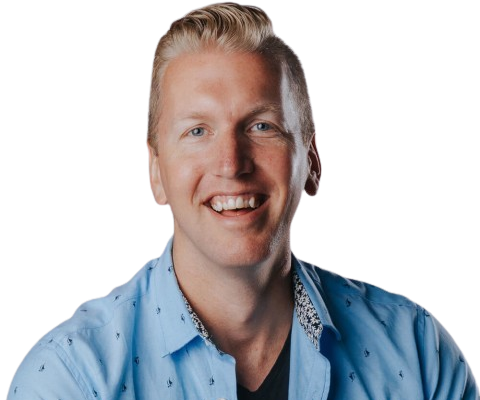Trademark Classes Explained | Nice Classification
Trademark Classes Explained | Nice Classification
This is the first in a series of videos I'm shooting about Trademark Classes. In this video, we'll provide an overview of the entire system and quickly go through all classes. Consider it an introduction to the Nice Classification (pronounced [nis] not [nice].)
I will be also shooting videos about several specific classes that are most commonly used by brand owners, as well as videos about specific industries to see which classes are relevant to them. If you have questions, I read them all and respond to most comments personally.
So if you want me to shoot a video about a particular trademark class or a video about the classes commonly used to trademark brands in a particular industry, let me know in the comments below. If you’re looking to learn more, make sure to subscribe to the channel so you’ll be notified when the next video is posted.
What is the Nice Classification System for Trademarks?
Let’s discuss the Nice Classification System.
It first came to be in 1957 when a bunch of countries realized that they wanted to standardize the way trademark offices around the world classified goods and services in respect of which brand owners trademarked their brands.
The Nice Classification, also known as the International Classification of Goods and Services, was established as a system of classifying goods and services for trademarks.
The first edition of the Nice Classification entered into force in April of 1961. Now, you see, trademarks don't give you an absolute monopoly over your name, logo, or tagline.
Trademarks give you a monopoly or the mental link between your name, logo, or tagline and specific products and services that you offer to the market under your name, logo, or tagline.
Now, for example, Apple doesn't own the word Apple by itself. They own the word Apple in connection with phones, watches, software, and a bunch of other products and services.
Now to put things into perspective, in 1961, the year when Nice Classification entered into force, we didn't have the internet, email, personal computers, video games, or even pocket calculators. Not only did the vast majority of today's most successful companies not exist in 1961, but the people who founded these companies also weren't even born in 1961.
You'll understand why this is important in a moment when I take you through the classes of the Nice Classification. Initially, there were only 34 classes for physical products only - class 1 to class 34, but recently 11 more classes were added. These classes, classes 35 to 45, cover services.
Currently, the most detailed level of the classification is the alphabetical list which contains around 10,000 indications of goods and 1,000 indications of services. I'm not gonna go through all these now. What I'm gonna do is I'm gonna walk you through the 45 classes to give you a general idea of what they are.
You may find that some of these items or services don’t quite fit in with the rest of the items in the classification. There is a reason for this.
There are only 34 classes for goods and they have to fit one of these 34. The system is designed to make things easy and simple and least confusing but really because it just keeps getting edited and because all they're trying to do is get rid of the overlap sometimes that is not really accomplishing that purpose.
Alright! Are you ready? Let's do this.
Trademark Classes
Class 1 - Chemicals for use in industry, science, and photography, as well as in agriculture, horticulture, and forestry; unprocessed artificial resins; unprocessed plastics; fire extinguishing and fire prevention compositions; tempering and soldering preparations; substances for tanning animal skins and hides; adhesives for use in industry; putties and other paste fillers; compost manures, fertilizers; biological preparations for use in industry and science. Chemicals are generally in this classification.
Class 2 - Paints, varnishes, lacquers, preservatives against rust and against deterioration of wood; colorants, dyes; inks for printing, marking, and engraving; raw natural resins; metals in foil and powder form for use in painting, decorating, printing and art.
Class 3 - Non-medicated cosmetics and toiletry preparations, non-medicated dentifrices; perfumery (I hope I'm saying it right), perfumery, essential oils; bleaching preparations and other substances for laundry use; cleaning, polishing, scouring, and abrasive preparations.
Class 4 - Industrial oils and greases, wax; lubricants; dust absorbing, wetting, and binding compositions; fuels and illuminants; candles and wicks for lighting.
Class 5 - Pharmaceuticals (that's a big class), medical and veterinary preparations; sanitary preparations for medical purposes; dietetic food and substances adapted for medical or veterinary use, food for babies; dietary supplements for human beings and animals; plasters, materials for dressings; material for stopping teeth, dental wax; disinfectants preparations for destroying vermin; fungicides, herbicides.
Class 6 - Common metals and their alloys, ores; Metal materials for building and construction; transportable buildings of metal; non-electric cables and wires of common metal; Small items of metal hardware; metal containers for storage or transport; safes.
Class 7 - Machines, machine tools, power-operated tools; motors and engines, except for land vehicles (land vehicles will go somewhere else); machine coupling and transmission components (except for land vehicles again); agricultural implements, other than hand-operated hand tools; incubators for eggs; automatic vending machines.
Class 8 - Hand tools and implements, hand-operated; cutlery; side arms, except firearms; razors.
Class 9 - Scientific, research, navigation, surveying, photographic, cinematographic, audiovisual, optical, weighing, measuring, signaling, detecting, testing, inspecting, life-saving and teaching apparatus and instruments; apparatus and instruments for conducting, switching, transforming, accumulating, regulating or controlling the distribution or use of electricity; apparatus and instruments for recording, transmitting, reproducing or processing sound images or data; recorded and downloadable media.
Computer software, all software which you sell as a product would be filed under Class 9. Keep in mind that software sold as a service is filed under a different classification.
Class 10 - Surgical, medical, dental, and veterinary apparatus and instruments; Artificial limbs, eyes, and teeth; orthopedic articles; therapeutic and assistive devices adapted for the disabled; massage apparatus; apparatus devices and articles for nursing infants, sexual activity apparatus, devices, and articles.
Class 11 - Apparatus and installations for lighting, heating, cooling, steam generating, cooking, drying, ventilating, water supply, and sanitary purposes.
Class 12 - Vehicles, apparatus for locomotion by land, air, or water. Locomotion right
Class 13 - Firearms, ammunition, and projectiles; explosives; fireworks. Remember, side arms are class 8, and not included in class 13.
Class 14 - Precious metals and their alloys; jewelry, precious and semi-precious stones; horological and chronometric instruments, or watches.
Class 15 - Musical instruments; music stands and stands for musical instruments; and conductors’ batons.
Class 16 - Paper and cardboard; printed matter; bookbinding material; photographs; stationery and office requisites, except furniture, adhesives for stationery or household purposes; drawing materials and materials for artists; paintbrushes; instructional and teaching materials; plastic sheets, films and bags for wrapping and packaging; printers type, printing blocks.
Class 17 - On processed and semi-processed rubber, gutta-percha, gum, asbestos, mica, and substitutes for all these materials; Plastics and resins in extruded form for use in manufacture; packing, stopping, and insulating materials; flexible pipes, tubes, and hoses, not of metal; right so because pipes, tubes, and hoses of metal belong to a different class.
Class 18 - Leather and imitations of leather; Animal skins and hides; Luggage and carrying bags; umbrellas and parasols; walking sticks; whips; harness and saddlery; collars, leashes, and clothing for animals. Notice here that they're grouping them not just for what things are but also what they're made out of.
Class 19 - Materials, not of metal, or building and construction; rigid pipes, not of metal, for building; asphalt, pitch, tar, and bitumen; transportable buildings, not of metal; monuments, not of metal. Right, again they carve out metal because metal belongs to a different class.
Class 20 - Furniture, mirrors, picture frames; containers, not of metal, for storage or transport; unworked or semi-worked bone, horn, whalebone or mother-of-pearl; shells; meerschaum; yellow amber.
Class 21 - Household or kitchen utensils and containers; cookware and tableware, except forks, knives, and spoons; combs and sponges; brushes, except paintbrushes; brush-making materials; articles for cleaning purposes; unworked or semi work glass; except building glass glassware, porcelain, and earthenware.
Class 22 - (We're almost halfway there) Ropes and string; nets; tents and tarpaulins; awnings of textile or synthetic materials;; sails; sacks for the transport and storage of materials in bulk; padding; cushioning and stuffing materials, except paper, cardboard, rubber or plastics; raw fibrous textile materials and substitutes thereof.
Class 23 - This is probably the shortest class there is, made up of just yarns and threads for textile use.
Class 24 - Textiles and substitutes for textiles; household linen; curtains of textile or plastic.
Class 25 - is massive but the header is very short: clothing, footwear, headwear.
Class 26 - Lace, braid and embroidery, and haberdashery ribbons and bows; buttons, hooks and eyes, pins and needles; artificial flowers; hair decorations; false hair.
Class 27 - Carpets, rugs, mats and matting, linoleum and other materials for covering existing floors; wall hangings, not of textile.
The funny thing here is that linoleum used to be a trademark by itself. It was the name of a brand and then it became generic and now it even made it into the classification as a generic word. That's fascinating.
Class 28 - Games, toys, and playthings; video game apparatus; gymnastic and sporting articles; decorations for Christmas trees. So again, when they thought, “okay where do we put decorations for Christmas trees?” and they decided to put them in the same class as toys.
Class 29 - Meat, fish, poultry, and game; meat extracts; preserved, frozen, and dried and cooked fruits and vegetables; jellies, jams, compotes; eggs; milk, cheese, butter, yogurt, and other milk products; oils and fats for food.
Class 30 - Used a lot for the food industry. Coffee, tea, cocoa, and artificial coffee; rice, pasta, and noodles; tapioca and sago; flour and preparations made from cereals; bread, pastries, and confectionery; ice cream, sorbets, and other edible ices; Sugar, honey, treacle; yeast, baking-powder; salt, seasonings, spices, preserved herbs; vinegar, sauces and other condiments; ice (frozen water). Well, thanks for telling me.
Class 31 - Raw and unprocessed agricultural, aquacultural, horticultural, and forestry products; raw and unprocessed grains and seeds; fresh fruits and vegetables, fresh herbs natural plants and flower bulbs, seedlings, and seeds for planting; live animals; foodstuffs and beverages for animals; malt.
Class 32 - Beers; non-alcoholic beverages; mineral and aerated waters; fruit beverages and fruit juices; syrups and other non-alcoholic preparations for making beverages.
Class 33 - Alcoholic beverages, except beers; alcoholic preparations for making beverages. So in theory, if you have a beer and some other harder liquor or even wine, you would have to file that trademark in two classes 32 and 33.
Class 34 - Tobacco and tobacco substitutes; cigarettes and cigars; electronic cigarettes; and oral vaporizers for smokers; smokers’ articles; matches.
And now the classes for services. That's classes 35 to 45.
Class 35 - Advertising; business management; Business Administration and office functions. Actually, the first video that I'm going to publish for a specific class is going to cover class 35 because as you'll see, the header can be very short but the scope of what the class covers could be massive.
Class 36 - Insurance; financial affairs; Monetary affairs; real estate affairs.
Class 37 - Building construction; repair; installation services.
Class 38 - Telecommunications.
Class 39 - Transport packaging and storage of goods travel arrangements. Now remember there were several classes that dealt with vehicles and things that actually move, so those were for products. Those worth for the actual vehicles, class 39 are the service of transportation of moving people and goods from point A to point B.
Class 40 - Treatment of materials.
Class 41 - Education; providing of training; entertainment; sporting and cultural activities.
Class 42 - Scientific and technological services and research and design relating thereto; industrial analysis and industrial research services; design and development of computer hardware and software. So remember I mentioned software as a service, that's class 42. Software as a product, just to remind you, is Class 9. If you are trademarking software, this distinction is important to keep in mind.
Class 43 - Services for providing food and drink; temporary accommodation.
Class 44 - Medical services; veterinary services; hygienic and beauty care for human beings or animals; agriculture, horticulture, and forestry services.
Class 45 - Legal services; security services for the physical protection of tangible property and individuals; personal and social services rendered by others to meet the needs of individuals. So class 45 is where Trademark Factory brand is registered because that's what we offer.
We offer the service of helping you protect your brand to make sure you've got the legal tool to go against anybody else who's dumb enough to try to imitate the brand that you have trademarked. And so there you have it.
That was a lot to unpack. So if you want to learn more about any of these classes in particular, let me know and I will make a video to answer your questions directly!












